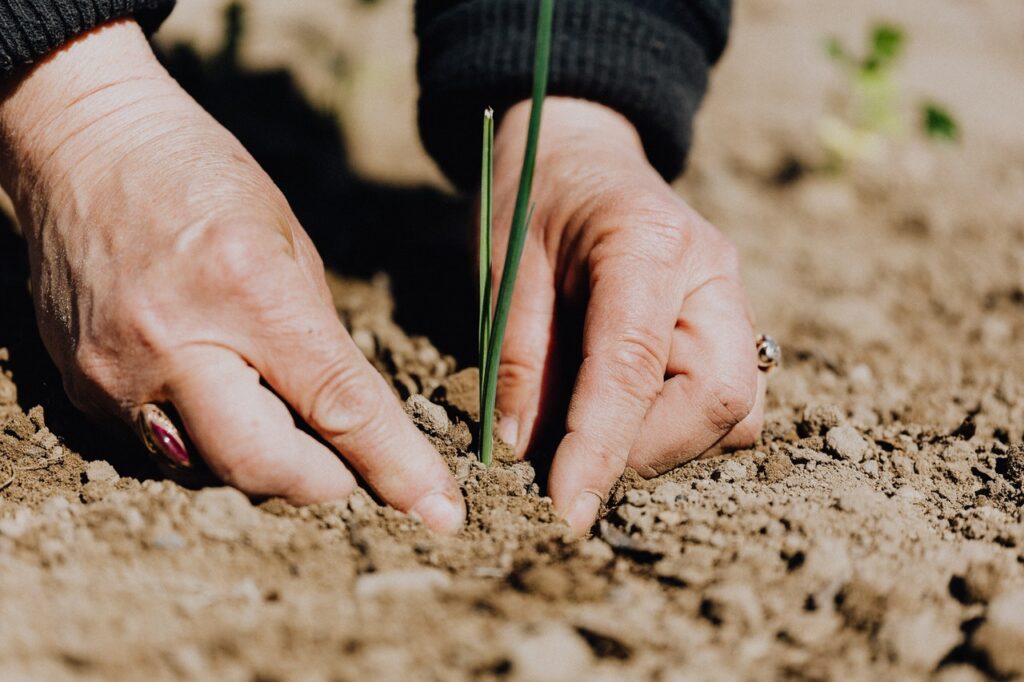Agriculturists have used seed treatment to protect the seeds from pests and pathogens for days beyond recall. It was long before the discovery of the nature of plant diseases. Today, seed treatment is a sophisticated process that is effective and friendly to the environment. It offers instant protection against pests like wireworms and aphids as well as fungal pathogens.
A Sure Way to Guard Your Investment Seeds treatment enables the seed to grow to its full potential, especially during the early stages when they are prone to attacks by pests and diseases. It eliminates pathogens from the soil and offers much-needed protection during germination.
The active ingredients protect the seeds for three to four weeks, a crucial stage for seed establishment. Benefits Pathogens, weeds, and insect pests cause tremendous loss of crops each year. Seed treatment is not a new phenomenon as farmers have sought new ways to protect their crops from damage since time immemorial.
The first seed treatment case dates back to 60 A.D when cypress leaves were used to protect seeds from insects while in storage, as stated in the American Seed Trade Association. Annual buying of seeds is not a cheap undertaking for a farmer.
Therefore, seed treatment must be employed to protect the seed value at all times. It also presents an eco-friendly way of using pesticides and insecticides compared to spraying.

Seed treatment is a standard management practice for a farmer who is keen on maximizing crop success. Although the soil type and other environmental conditions also play a role in determining a crop’s yield, seed treatment presents a variety of cost-effective benefits to a farmer, such as:
1. Early Season Protection Against Pathogens Seed treatments offer protection to the seeds by encasing the seedling, thereby keeping away pathogens that bloom in moist conditions. Fungicide seed treatment is beneficial for bin-run seeds against grain diseases such as smuts and bunts.
2. Better Stands and Yields
Expect remarkable improvement in your stands after using a seed treater which will eventually result in increased profits. Even in highly stressed fields vulnerable to root rot, seed treatment enhances plant protection and increases yields.
3. Targeted Protection Against Insect Pests
The pesticides used in seed treatment enable protection against the common types of insect pests and diseases. A farmer can also use a systemic insecticide consumed by the plant tissue and is repulsive to feeding insects or a contact insecticide that fights off insects that try to bite the seed.
4. Agronomic Benefits Seed treatment ensures maximized seedling establishment.
It also results in early plant growth translating into more forage yields. A healthy cell structure and stronger roots give the seeds the ability to withstand environmental stressors, such as dry conditions.
5. Safe Mode of Application
The fact that the targeted treatment zone is in the soil makes it a safe way of application allowing for a reduced impact on the environment. Seed treatment products contain few active ingredients to ensure a reduced chemical application to the soil compared to broad acre spray.
6. Enable Cropping Strategy Protection Unlike foliar applications, seed treatments provide protection early in the season, vital for cropping systems that use early planting with no-till or irrigation. It also significantly reduces dependence are weather-dependent chemical applications, whose use is sometimes delayed until pest pressure has manifested to damaging levels.
7. Ensure Great Returns Farmers value seed treatment because it reduces risk and an affordable cost. Protected seeds have a superior root system that absorbs nutrients with little difficulty. The manifestation of smuts and bunts ruins a crop resulting in unsellable and unmarketable grain. Seed treatment helps address these types of farm issues. It is a more tenable approach than increasing seeding populations to recompense for stand loss, which mostly yields no return.
Types of Treatments
Seed growers must understand the different types of seed treatment methods at their disposal. While some are used alone, other seed treatment methods are used in combination with each other to prevent pests, disease, nutrient deficiencies and also boost plant growth. They include:
· Fertilizers: They boost fertilizer performance and supply micronutrients to the soil, thus enhancing a plant’s growth. There are different fertilizer options available to cater to the varied emerging needs of a plant.
· Fungicides and insecticides: These seed treaters offer early-season protection to seeds and seedlings against diseases and fight pests when they are most vulnerable.
· Plant growth regulators: They are exceptionally vital during the stand establishment stage of the seedling. When used, a plant becomes tolerant to stressful conditions during the critical formative stages.
· Microbial inoculants: Besides boosting plant growth, these seed treaters also promote soil diversity through essential microorganisms. They also help increase crop yields.
Supplier Applied Or Planter Box Treatments? Growers can purchase already treated and ready to use seeds or even custom treated seeds from a reputable seed dealer. It is very convenient because dealer-applied treatments come applied at the proper rates In some seed treatments, the growers have to mix the seeds with the treatment before planting.
This treatment is not as convenient as the dealer-applied type because it is time-consuming. The risk of error from mixing at improper rates is also high. If this is your preferred form of treatment, ensure the seed and the treatment are thoroughly mixed in the planter box.
Important Safety Precautions
The agricultural industry is highly regulated. New products or discoveries have to be subjected to adequate research and testing before being implemented. The same goes for the treated seeds. Farmers must be familiar with safe handling procedures to protect the environment, wildlife, and the food industry. A few guidelines the farmers must follow to protect the environment are.
· Know the type of treatment applied to the seeds to enable proper handling
· Always wear protected gear when handling treated seed
· Wipeout/clean spills immediately
· Ensure there is no dust generated when handling the treated seed
· Ensure proper disposal of leftover treated seeds
Conclusion
Every farmer desires that seeds planted mature into healthy plants that will give a bumper harvest. To achieve this, they diligently care for the land to ensure it produces crops for their families and the world. Seed treatment is very instrumental in helping them attain all their farming goals.



